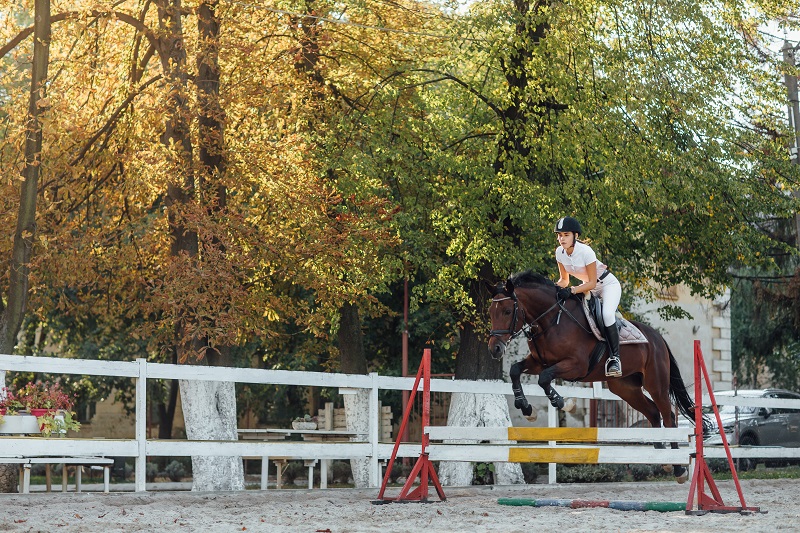Exercises to Improve Your Horse’s Jumping Form

Jumping requires a combination of strength, balance, and precision, and improving your horse’s form over fences takes consistent training. Whether you’re working with a young horse or refining the technique of an experienced jumper, incorporating specific exercises into your routine can enhance performance—especially in competitive show jumping, where precision and technique make all the difference.
1. Gymnastic Grids for Coordination and Balance
Gymnastic grids are a great way to help your horse develop rhythm, balance, and coordination over jumps. These are a series of jumps placed in a row at specific distances to encourage the horse to focus on their takeoff and landing.
How to Set It Up:
- Start with a trot pole leading to a small crossrail.
- Follow with a one-stride to a vertical and then another one-stride to an oxer.
- Keep the distances comfortable to encourage smooth, balanced jumps.
Benefits:
- Encourages the horse to stay light in the front end.
- Helps build confidence and consistency over fences.
- Improves coordination and muscle memory.
2. Cavaletti Work for Strength and Adjustability
Cavaletti poles, either on the ground or raised slightly, help improve your horse’s stride adjustability and strength.
How to Use Cavaletti:
- Set four to five poles in a row about 4 to 4.5 feet apart for trotting or 9 to 10 feet apart for cantering.
- Ride through at a steady pace, allowing your horse to find a natural rhythm.
- Gradually raise some of the poles to encourage better lift and hind-end engagement.
Benefits:
- Strengthens hindquarters and topline.
- Encourages the horse to lift their legs more efficiently.
- Helps with stride control before and after jumps.
3. Bounces for Quick Reflexes
Bounce exercises involve setting jumps close together so the horse lands and immediately takes off again without a full stride in between. This helps develop explosive power and quick footwork.
How to Set It Up:
- Place two small verticals about 9 to 10 feet apart (depending on your horse’s stride).
- Start with low heights and gradually increase as the horse becomes comfortable.
- Ride with a steady, balanced position to allow the horse to adjust naturally.
Benefits:
- Encourages a quicker response time.
- Helps the horse develop better front-end technique.
- Strengthens muscles needed for more powerful jumps.
4. Canter Poles for Stride Regulation
Having control over your horse’s stride before and after a jump is crucial for clean rounds. Canter poles help with stride length adjustment and overall jump preparation.
How to Use Canter Poles:
- Place poles about 10 to 12 feet apart (adjust based on stride length).
- Canter through at a controlled, even pace without rushing.
- Vary the number of strides between poles to improve responsiveness.
Benefits:
- Teaches the horse to stay adjustable between jumps.
- Helps prevent rushing or hesitating before fences.
- Builds confidence and rhythm in jumping rounds.
5. Hill Work for Power and Stamina
Jumping requires strength in the hindquarters, and hill work is one of the best ways to develop it.
How to Incorporate Hill Work:
- Walk, trot, and canter up gentle slopes to build strength.
- Practice controlled descents to improve balance.
- Add small jumps on inclines to simulate real competition scenarios.
Benefits:
- Strengthens key muscles needed for jumping power.
- Improves balance and coordination on uneven terrain.
- Builds stamina for longer jumping sessions.
Improving your horse’s jumping form takes time, consistency, and a thoughtful training approach. By incorporating these exercises into your routine, you’ll help your horse develop better technique, strength, and confidence over fences. Always focus on gradual progression, and remember that a well-conditioned, engaged horse will perform at its best.
